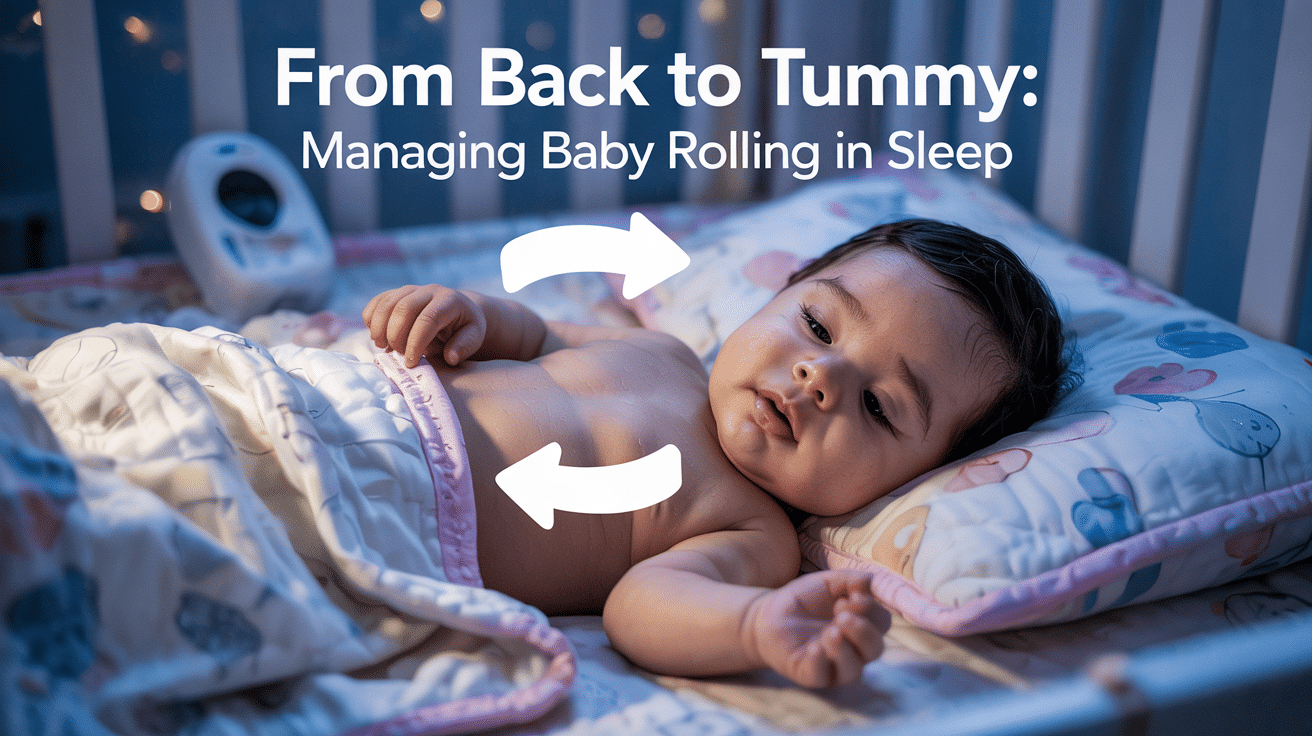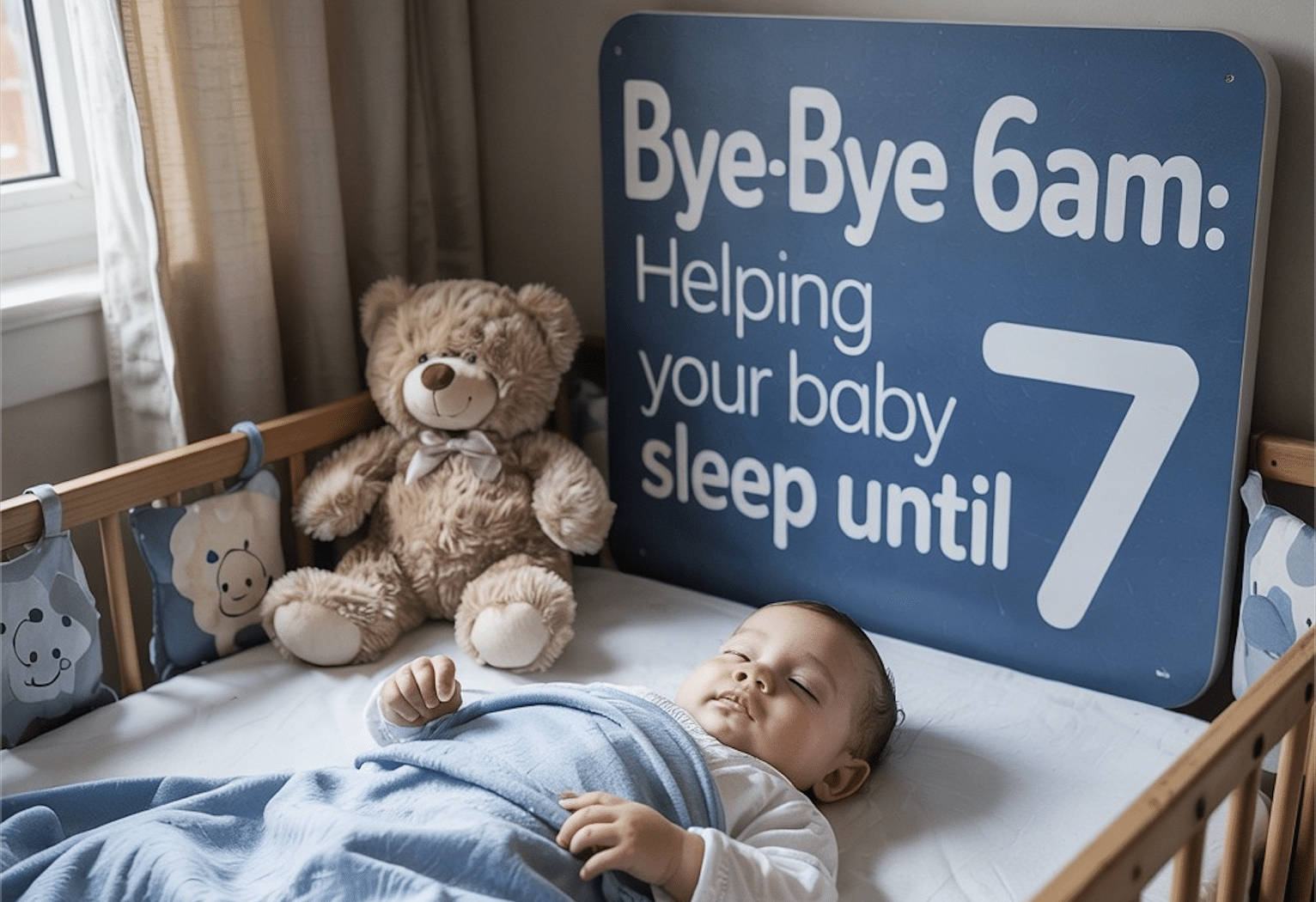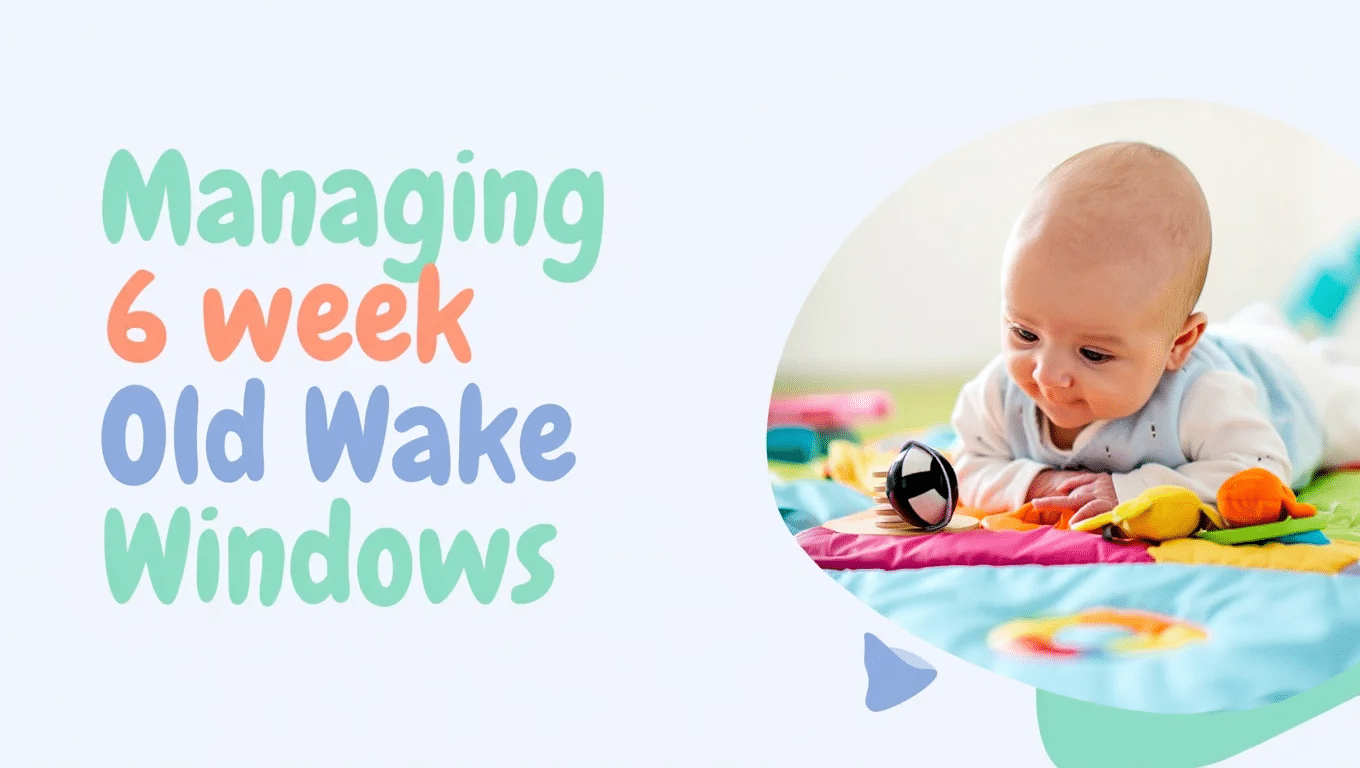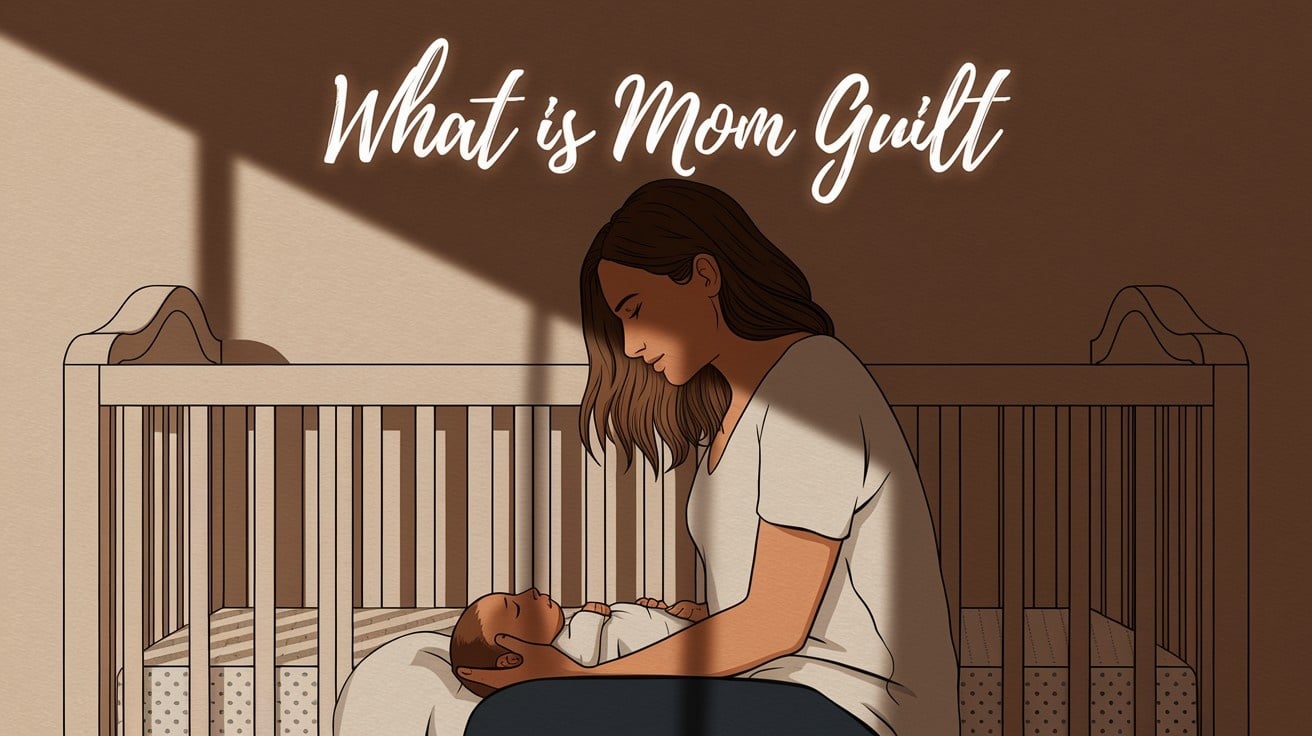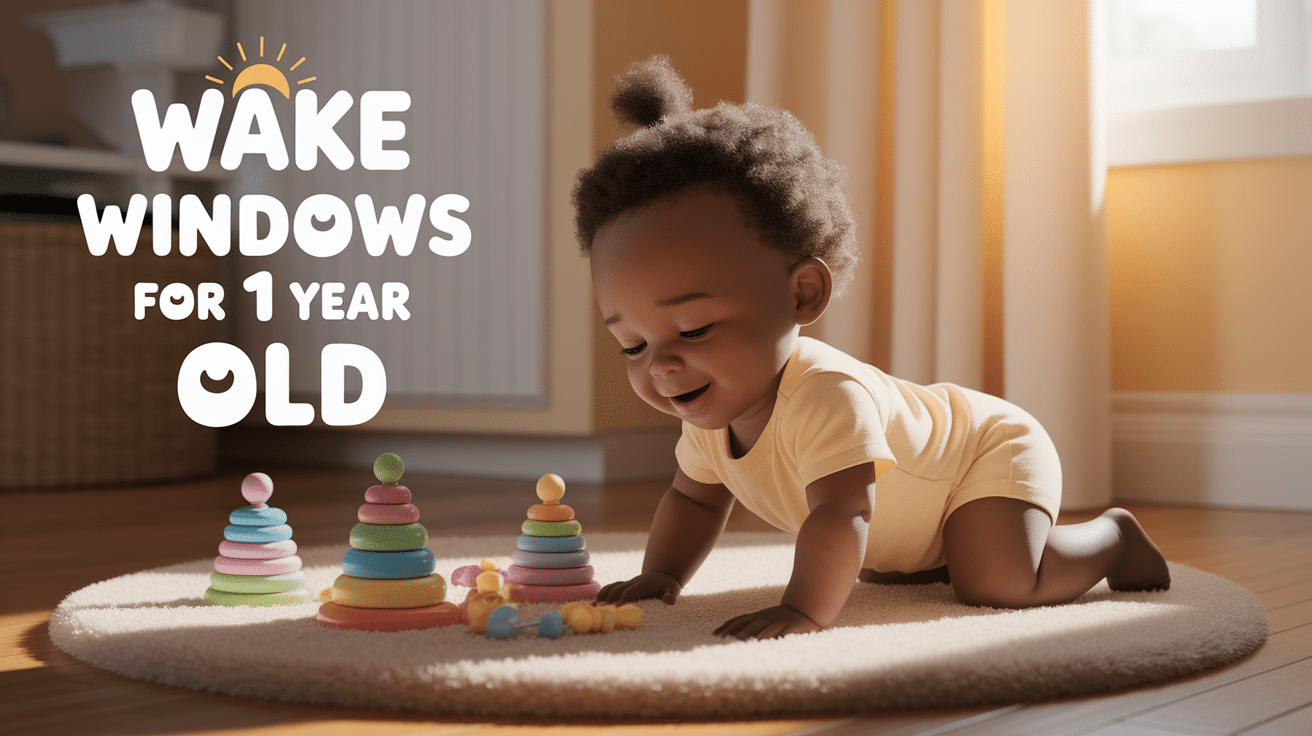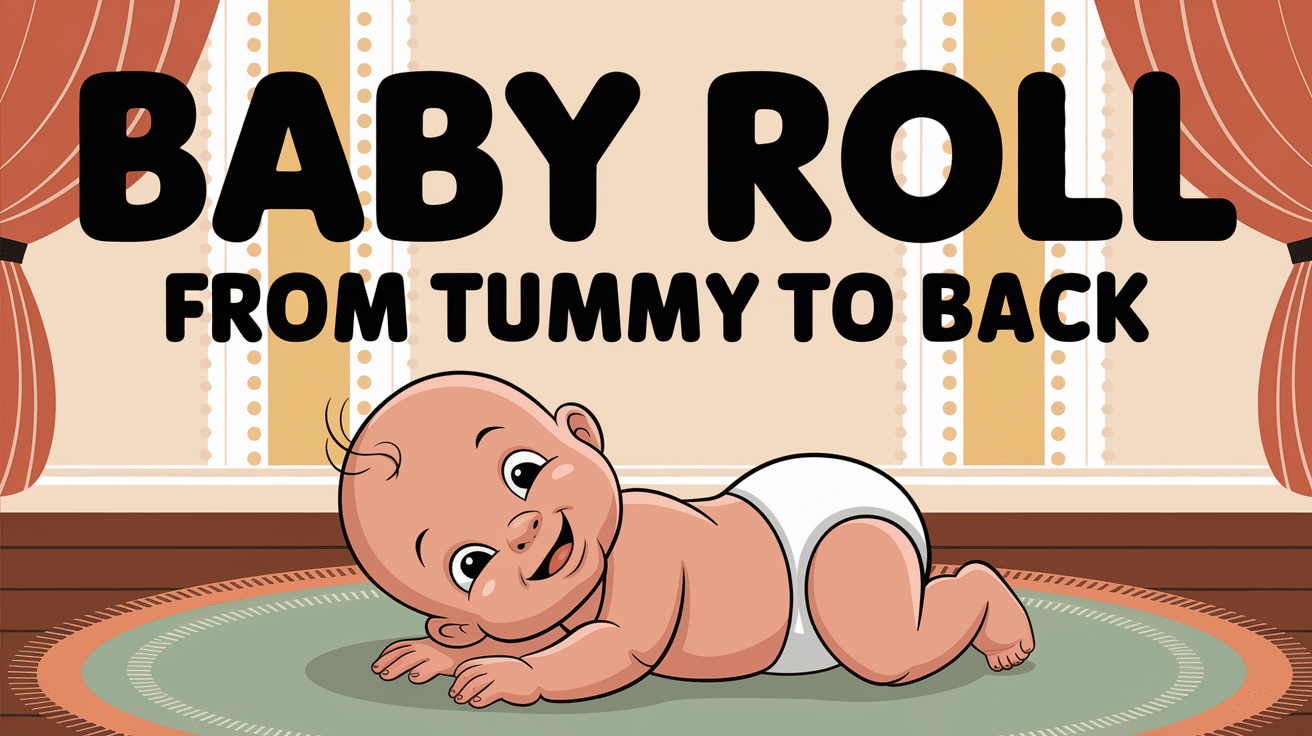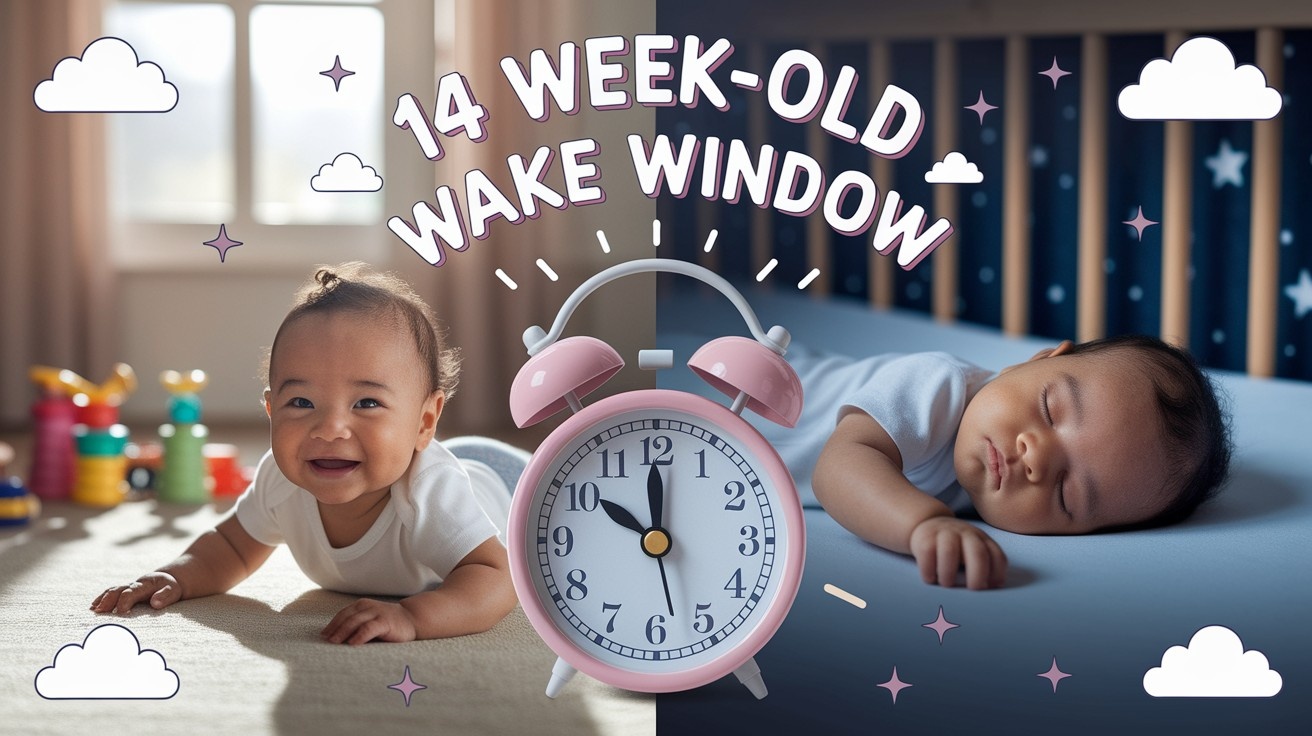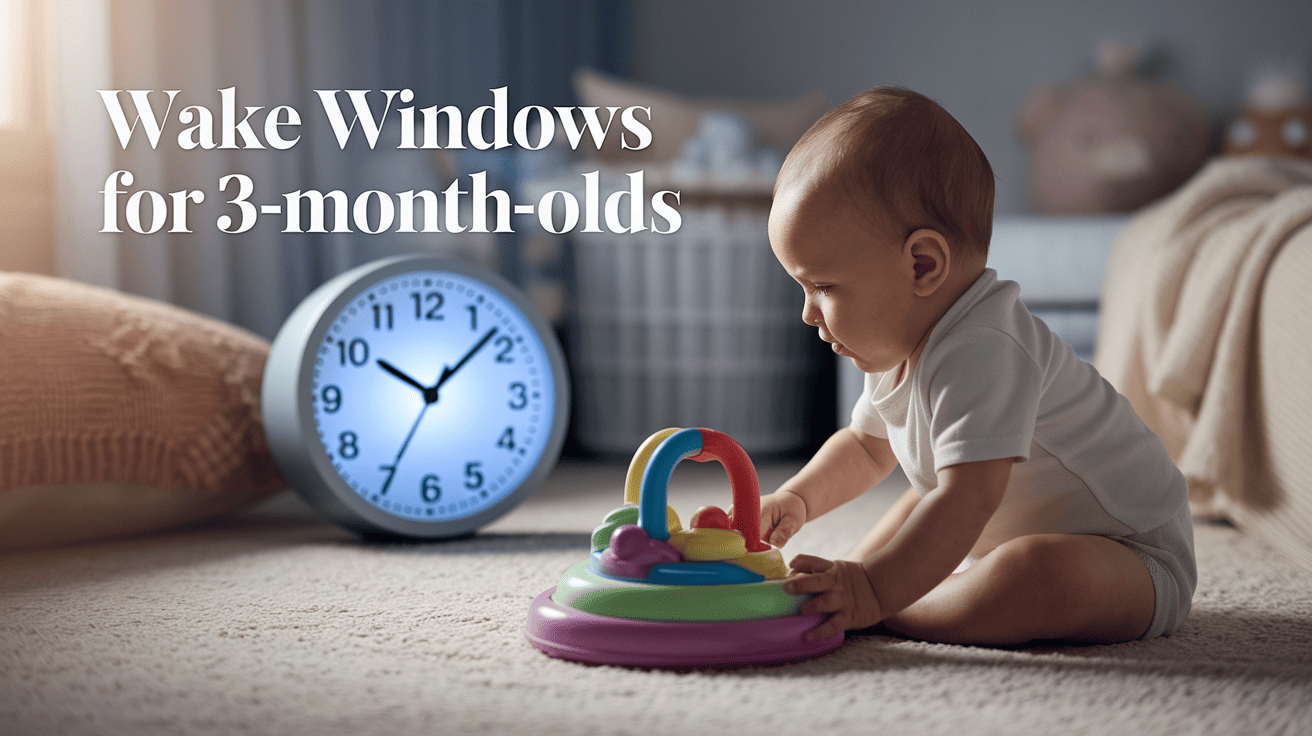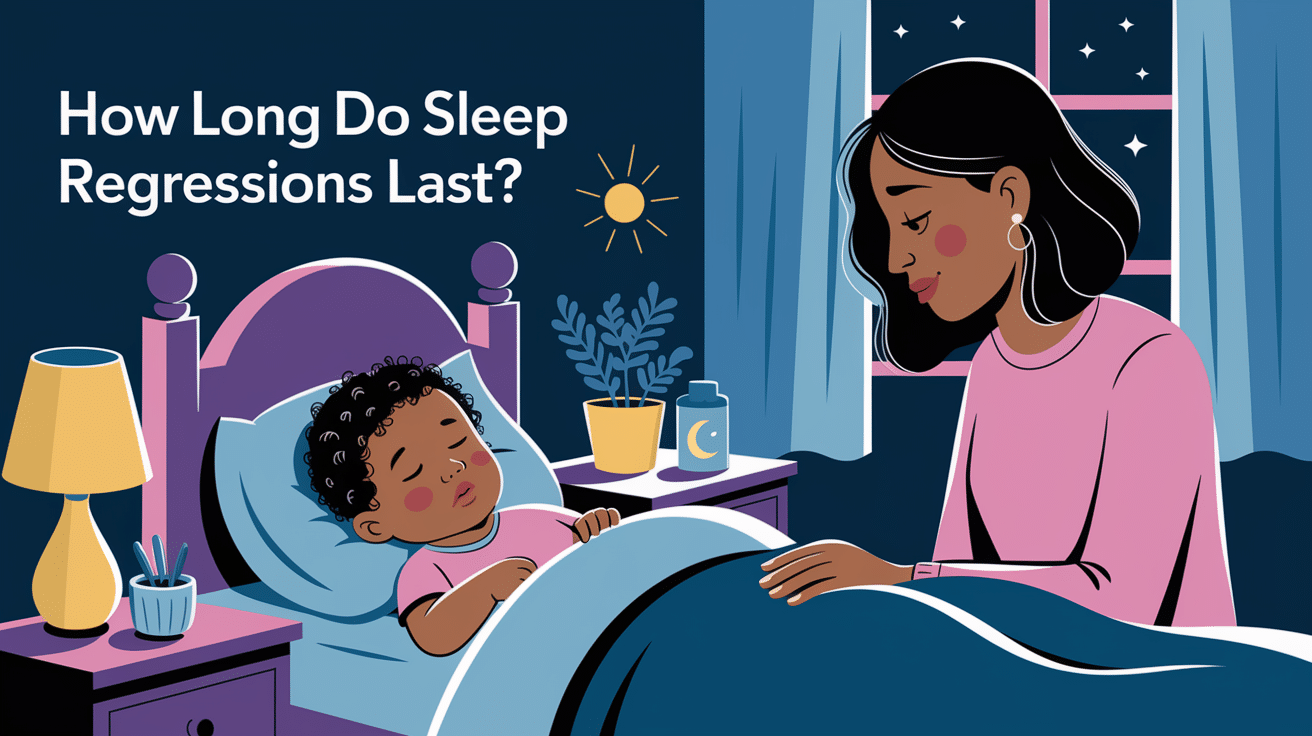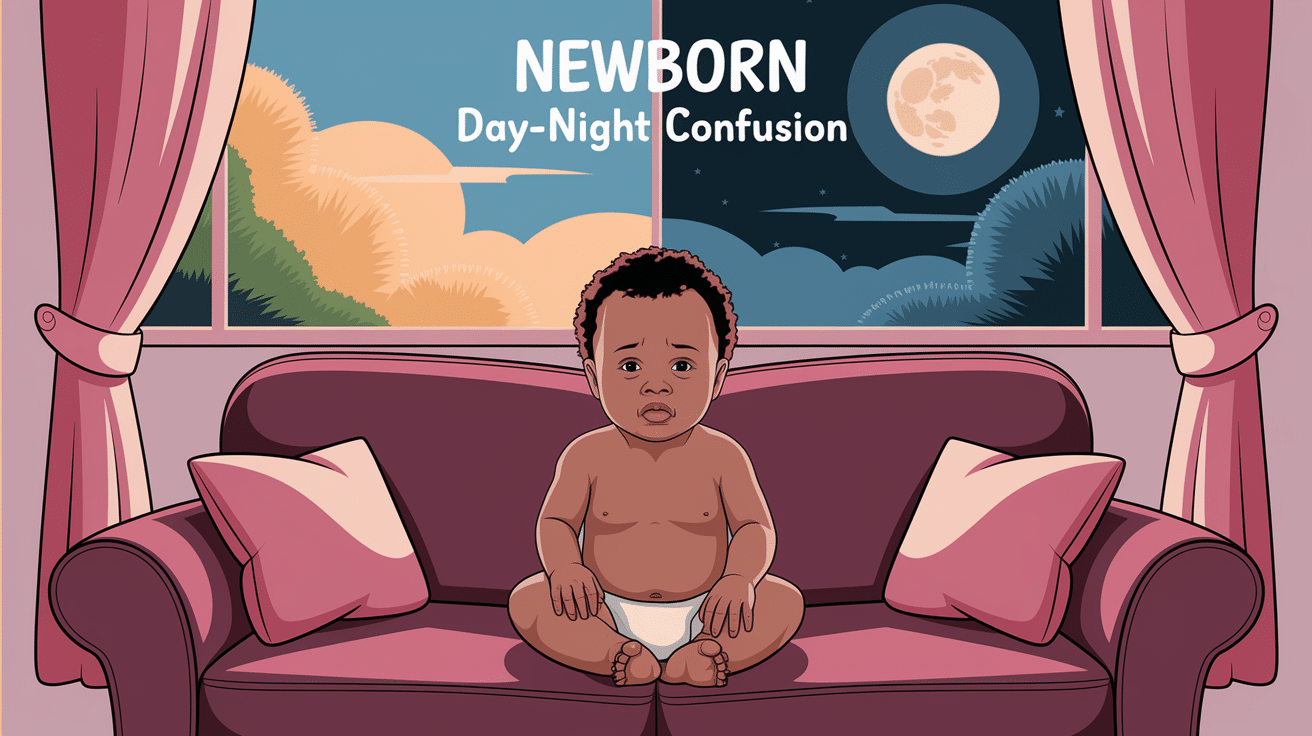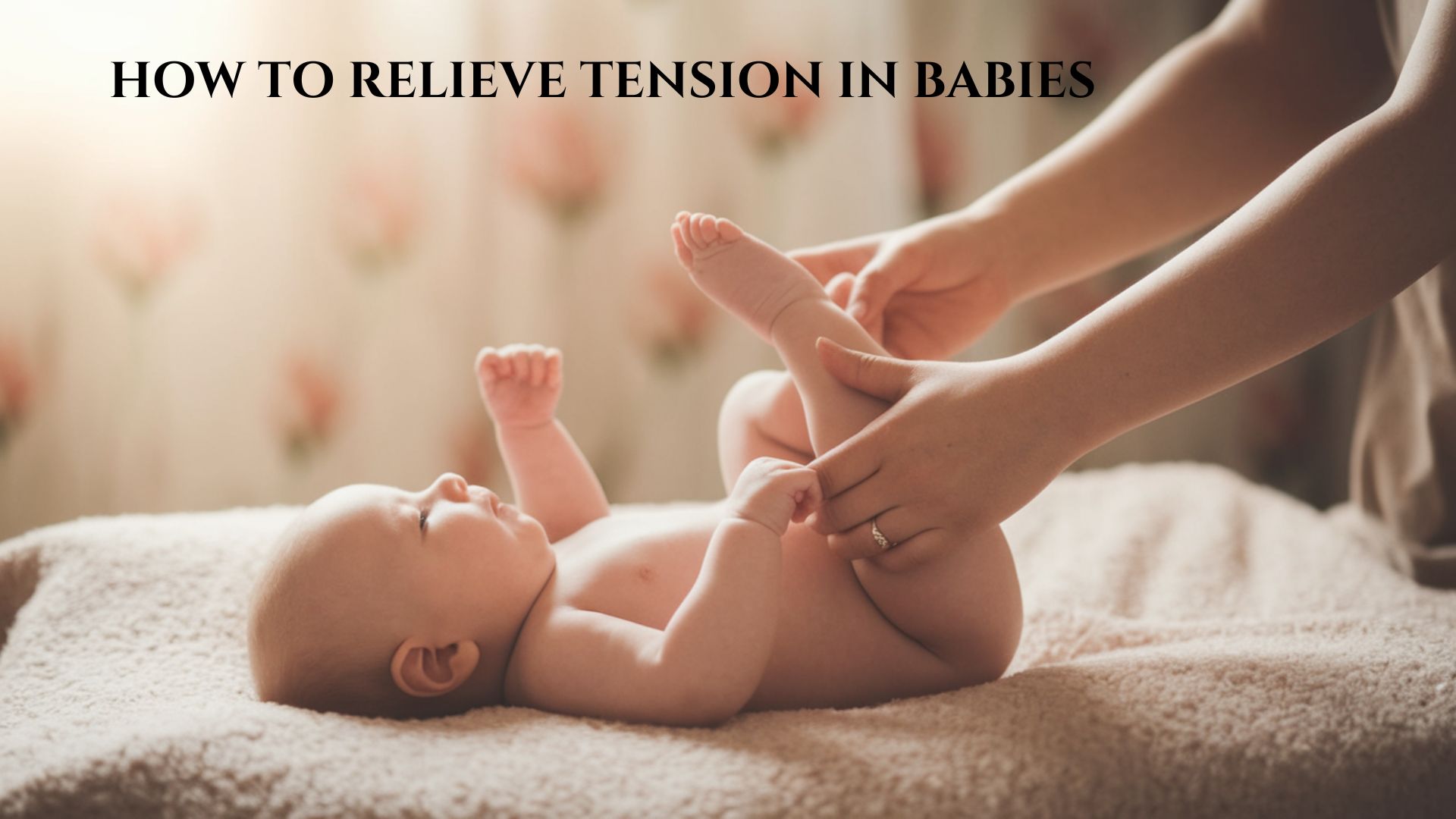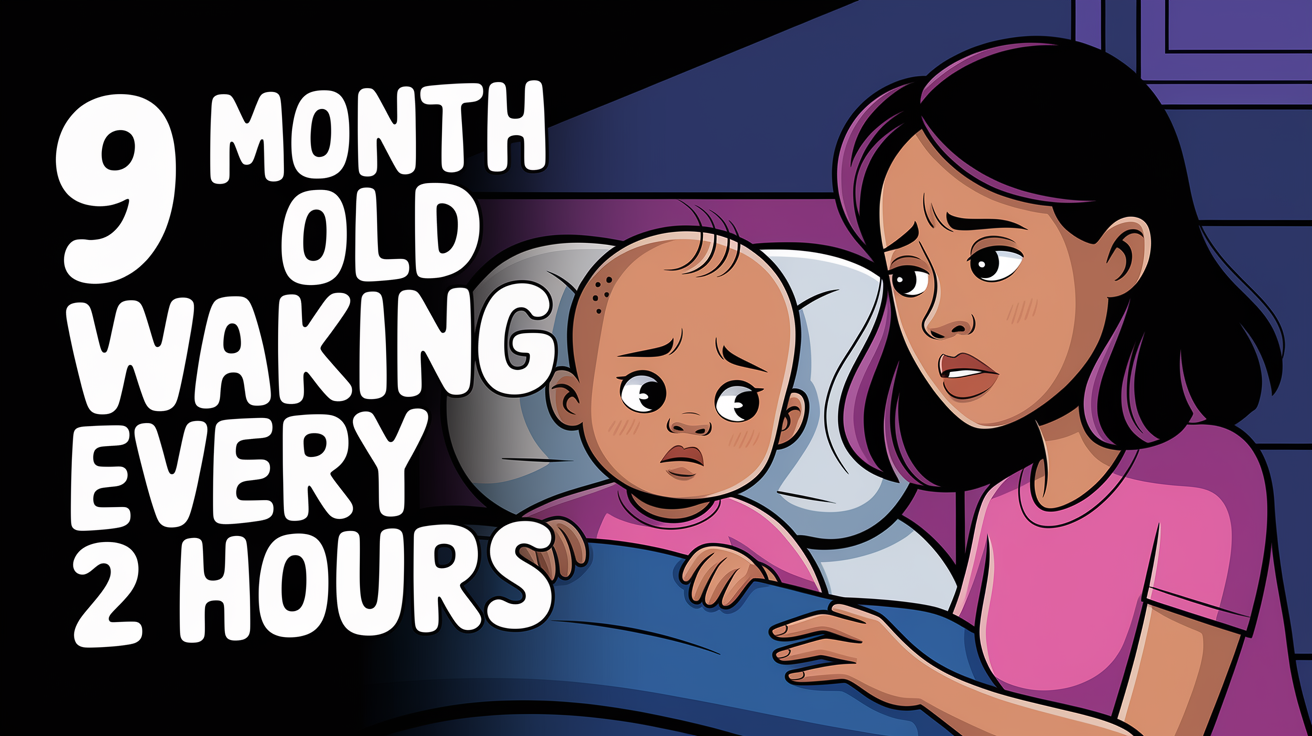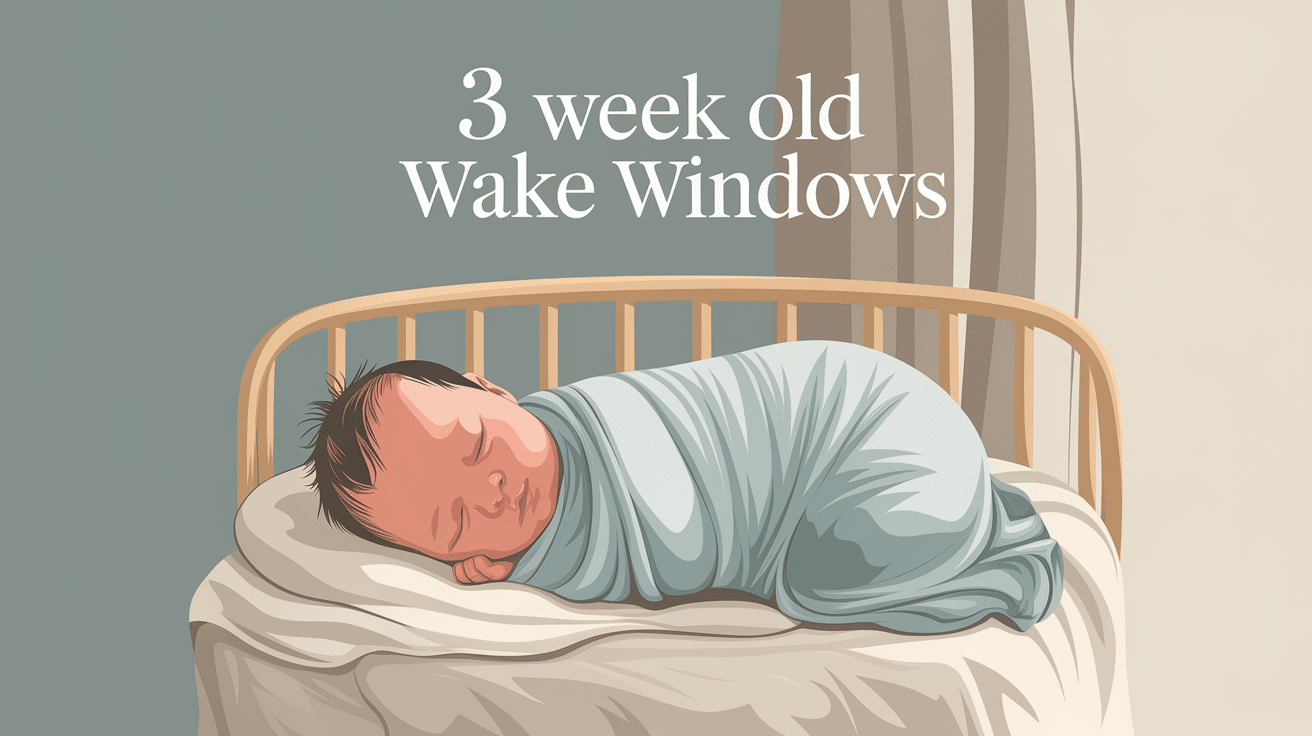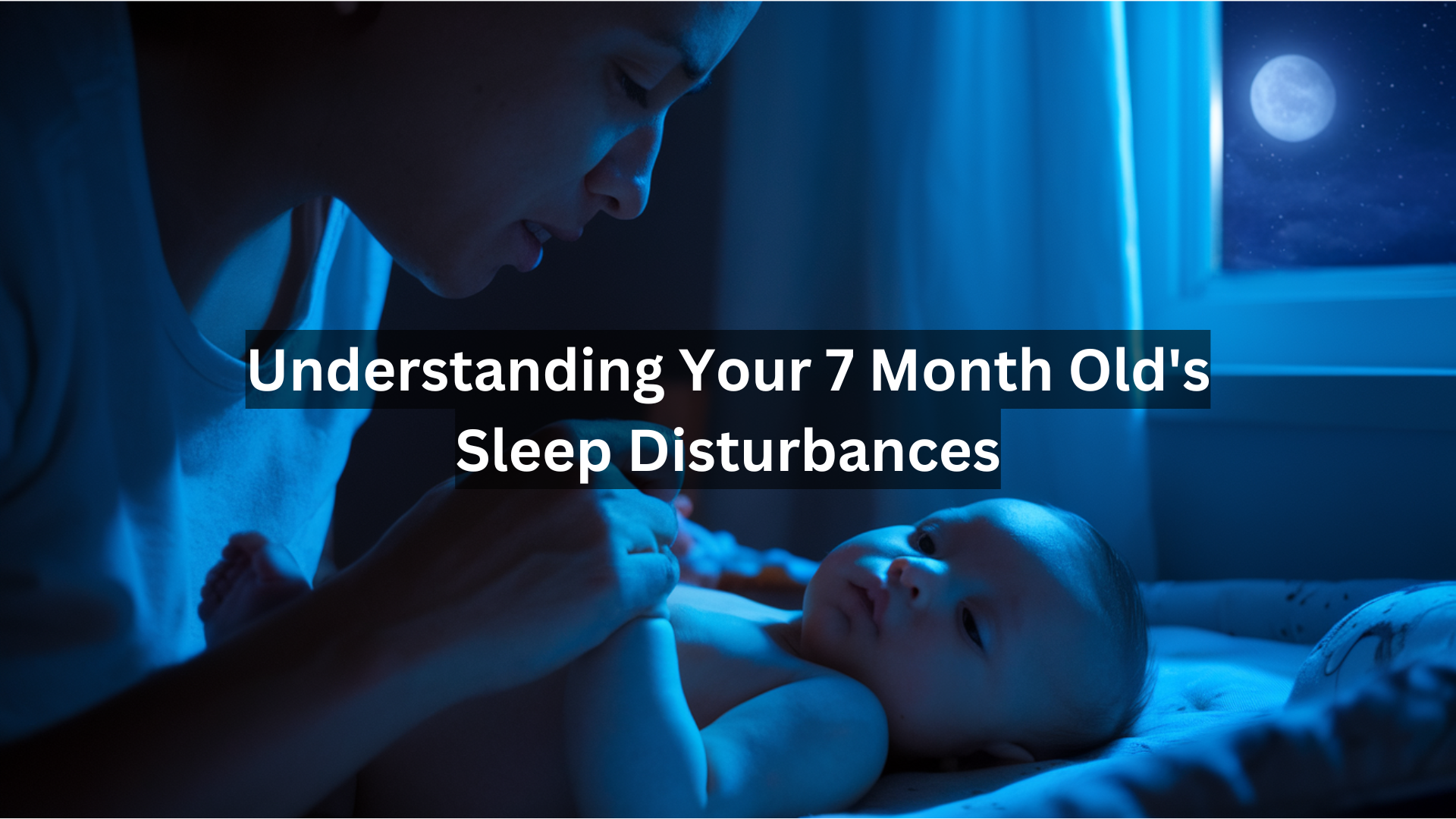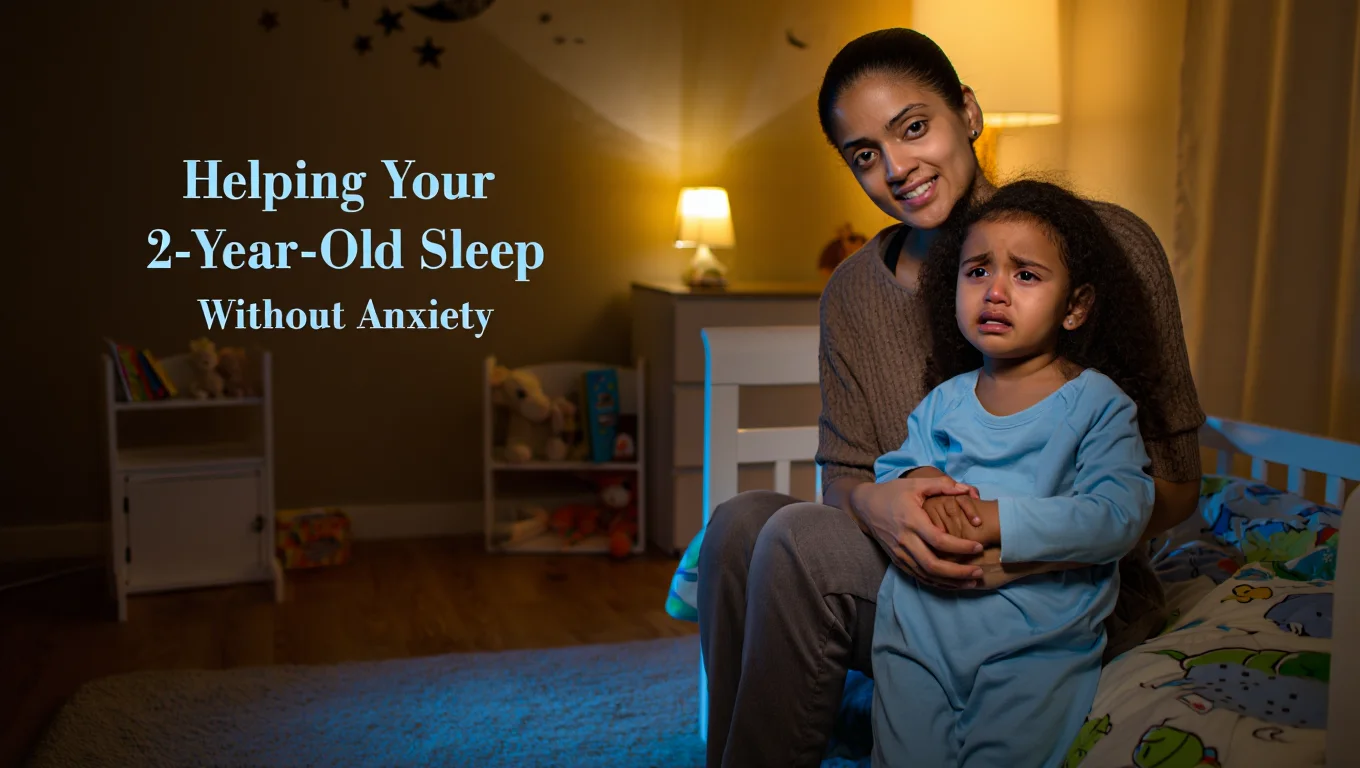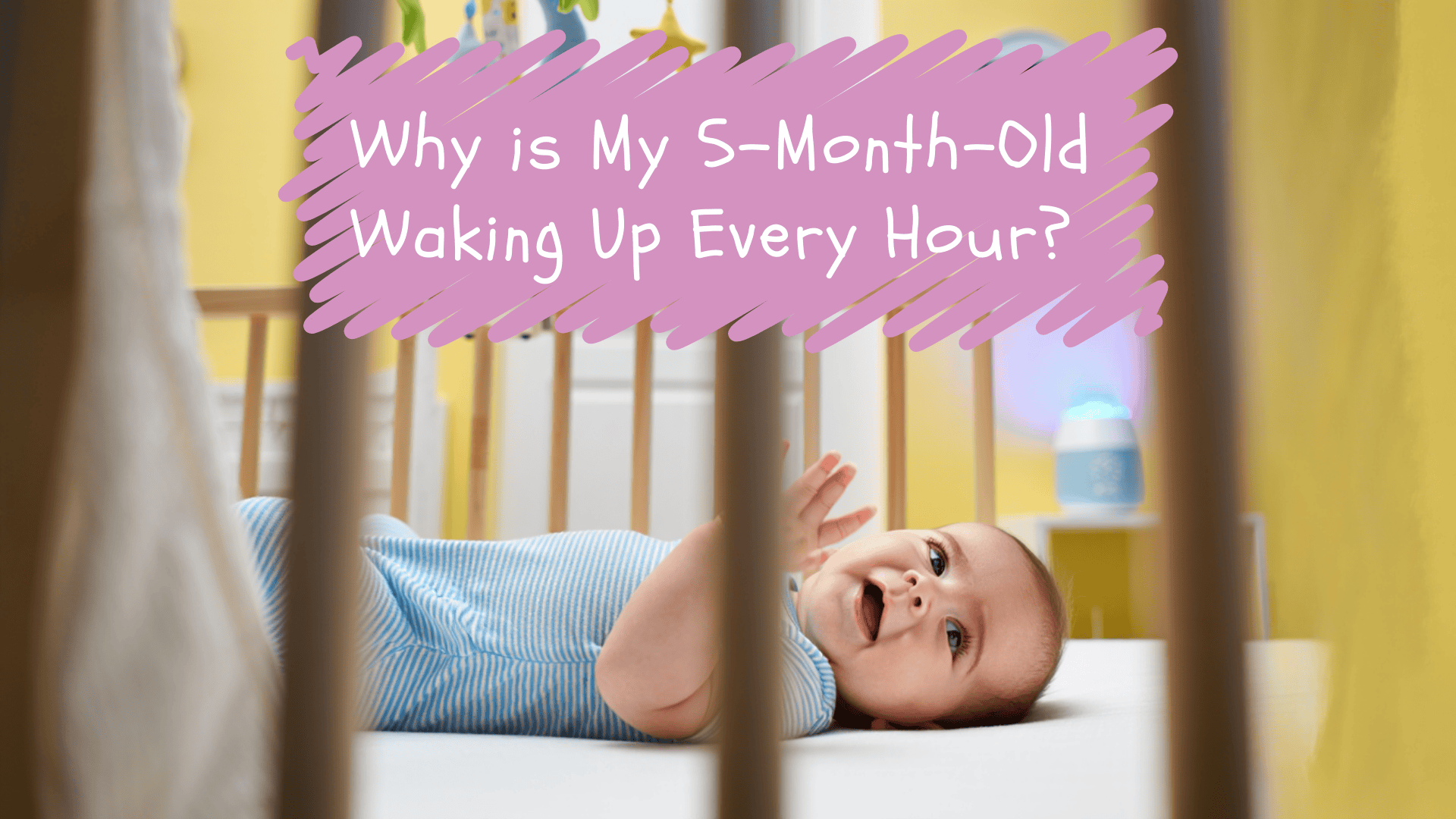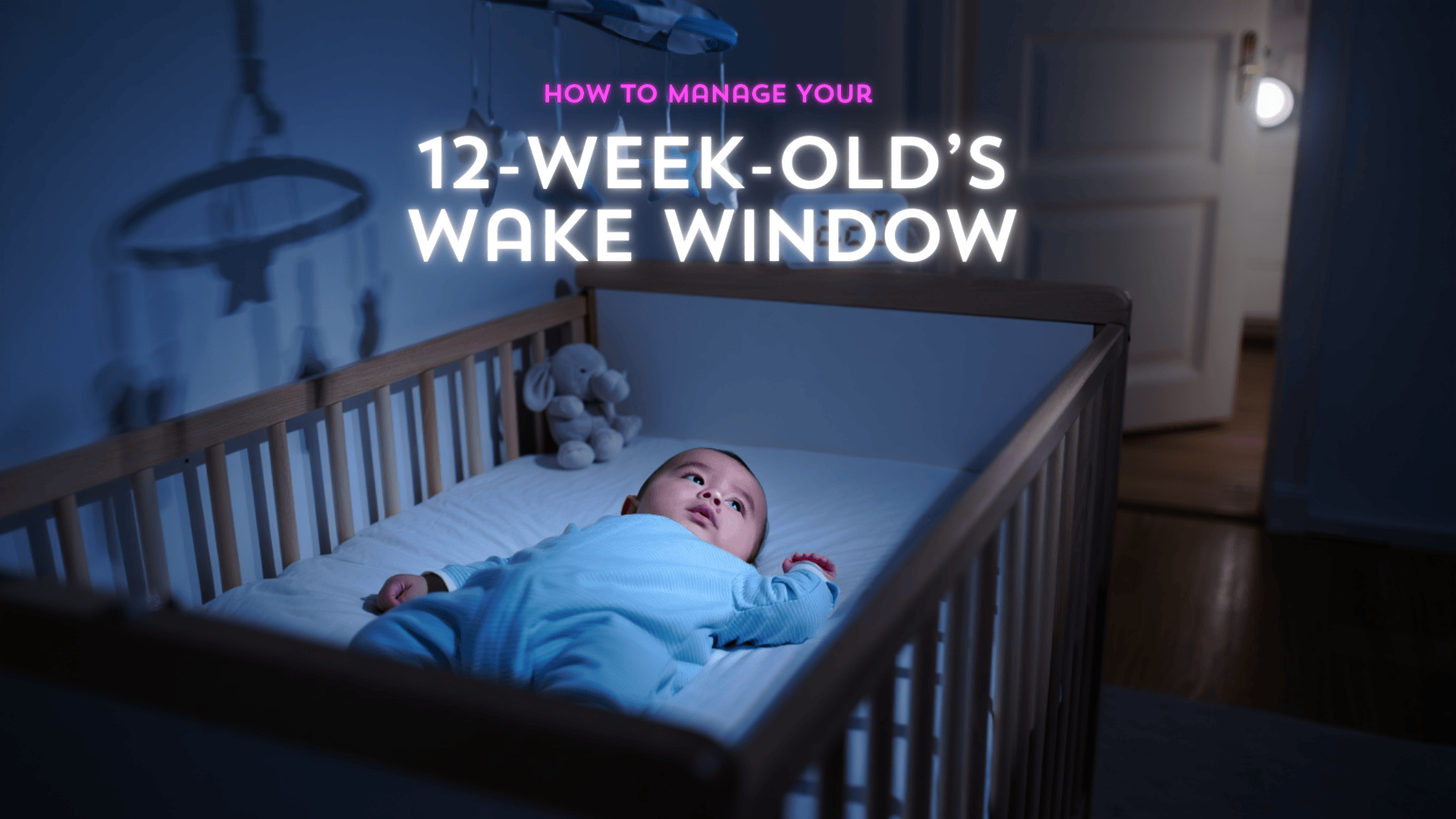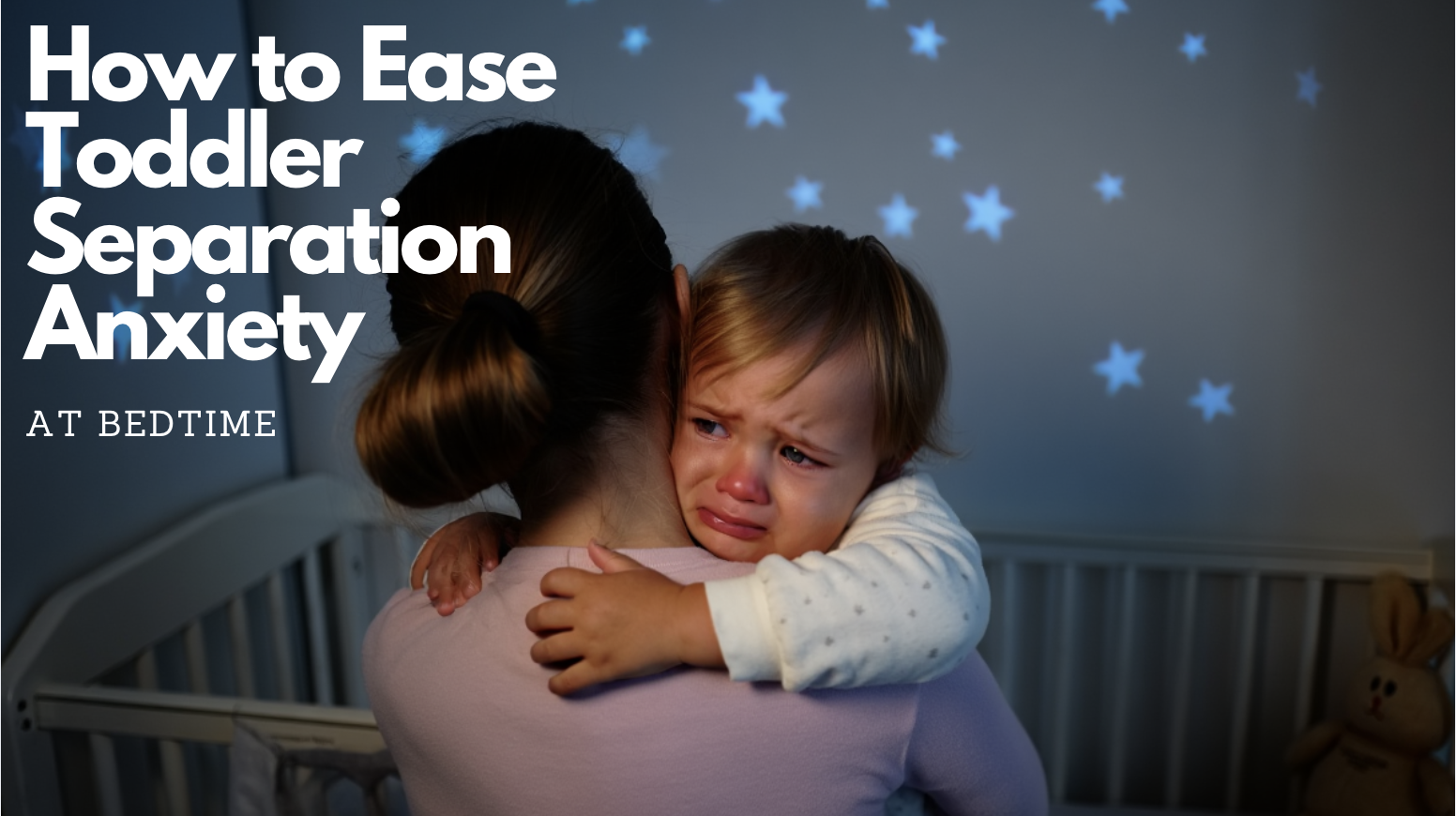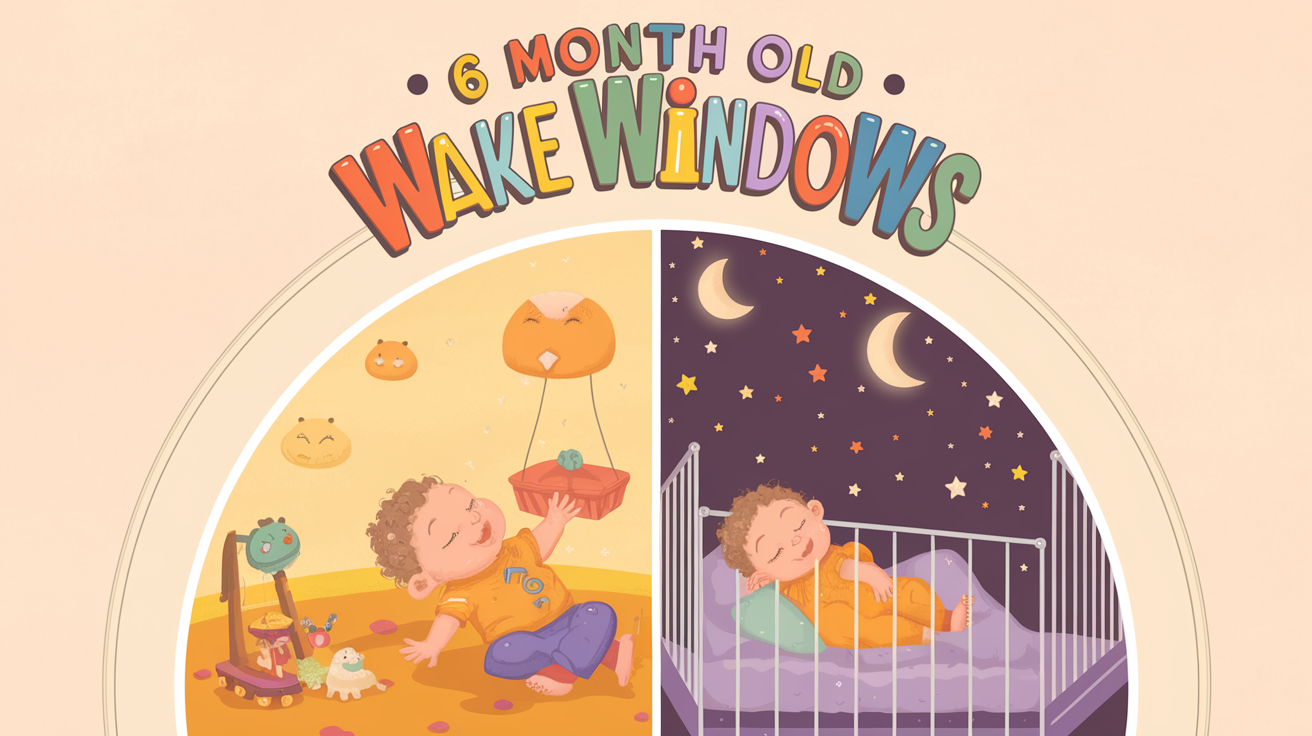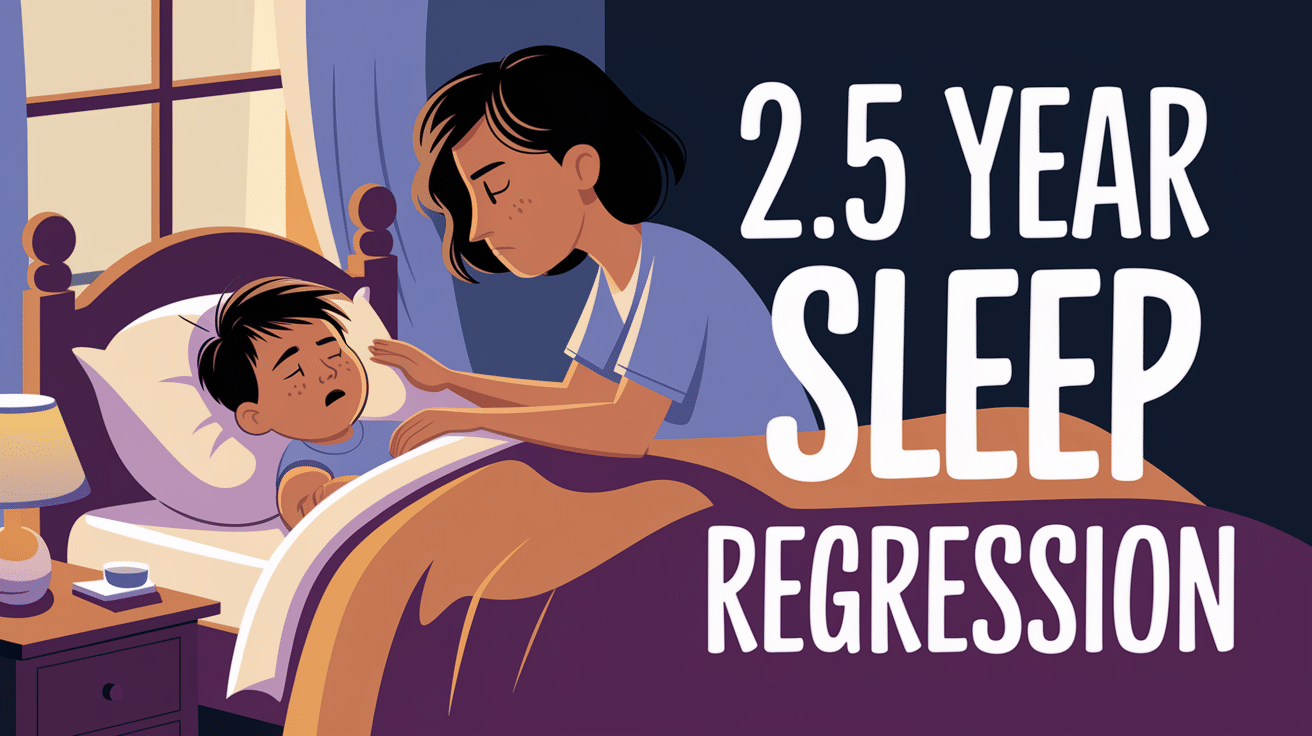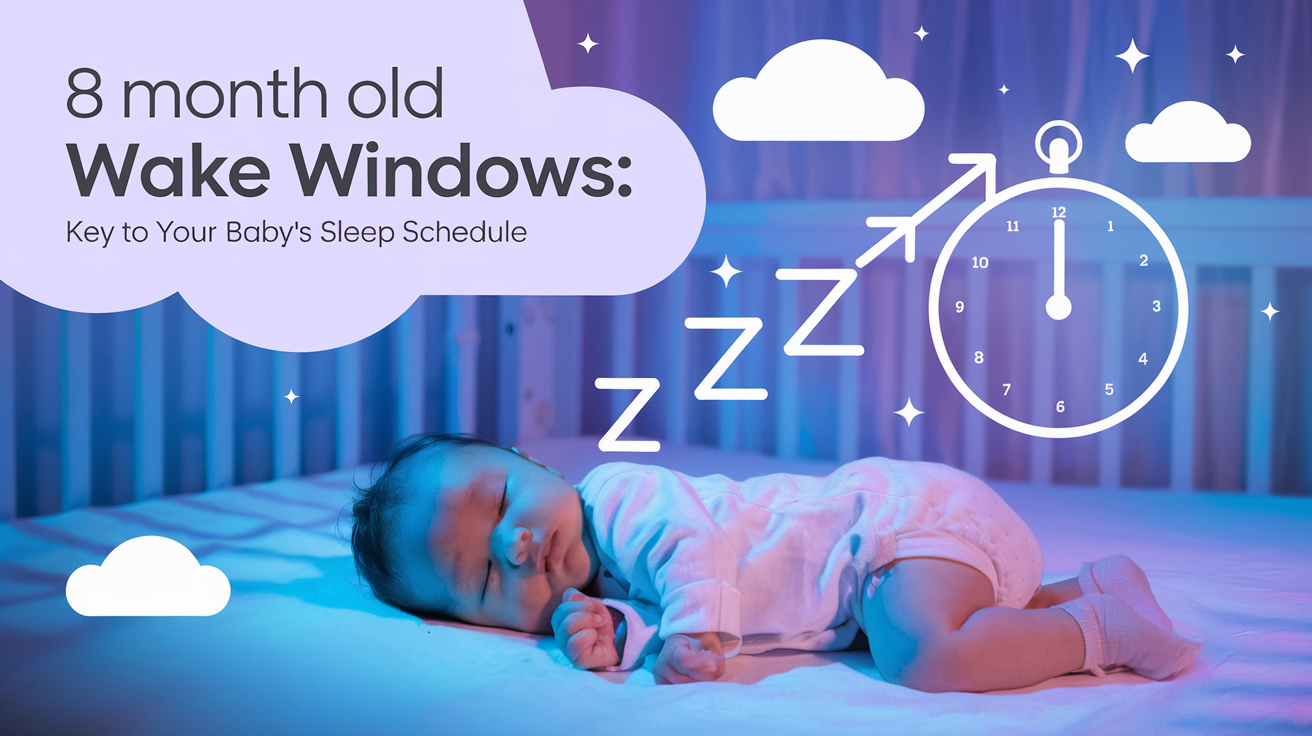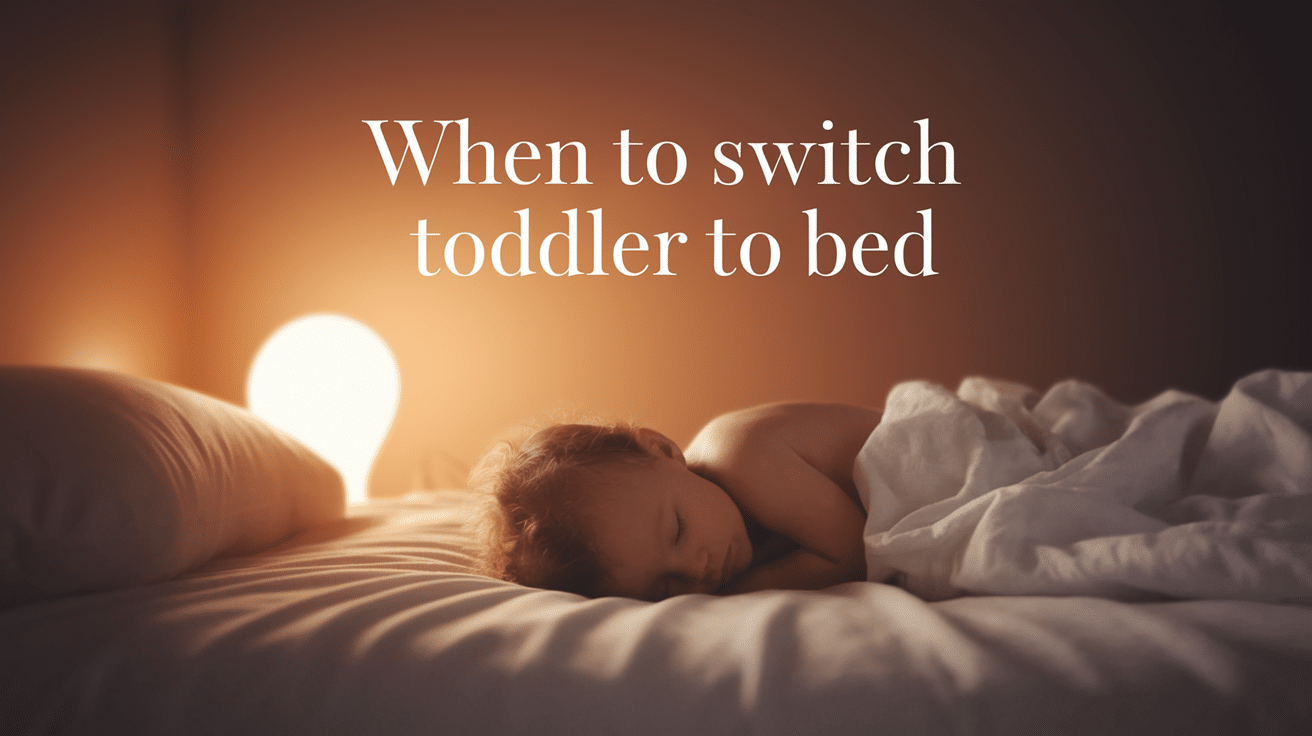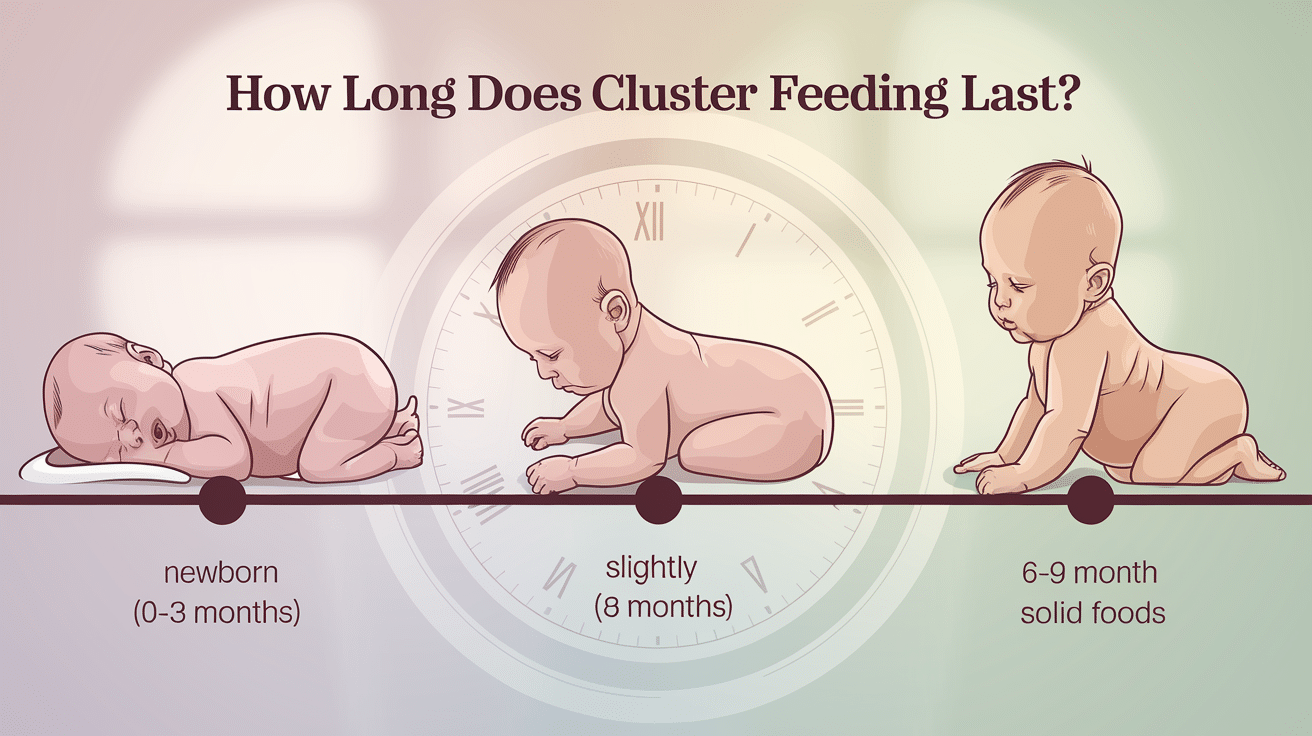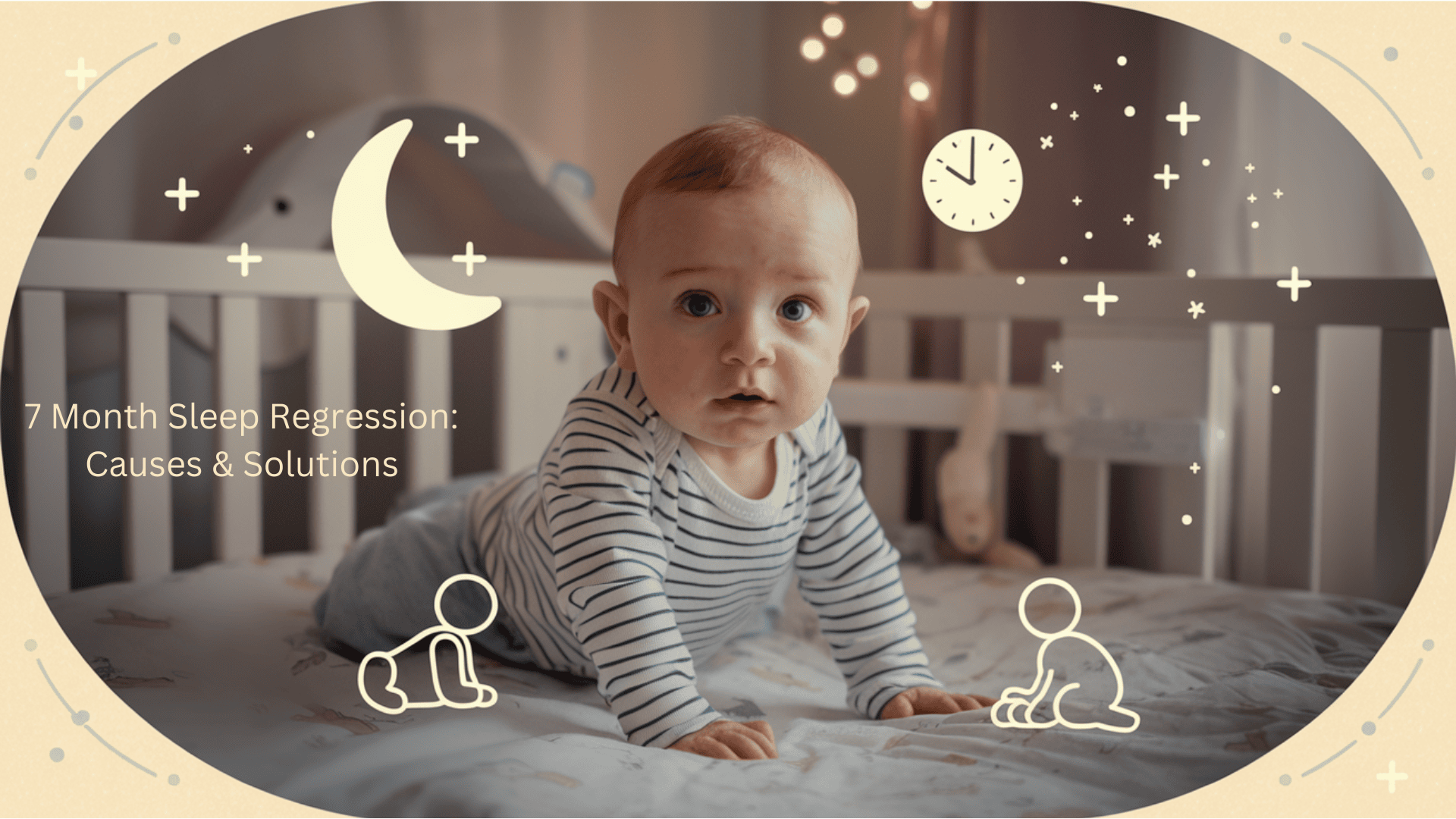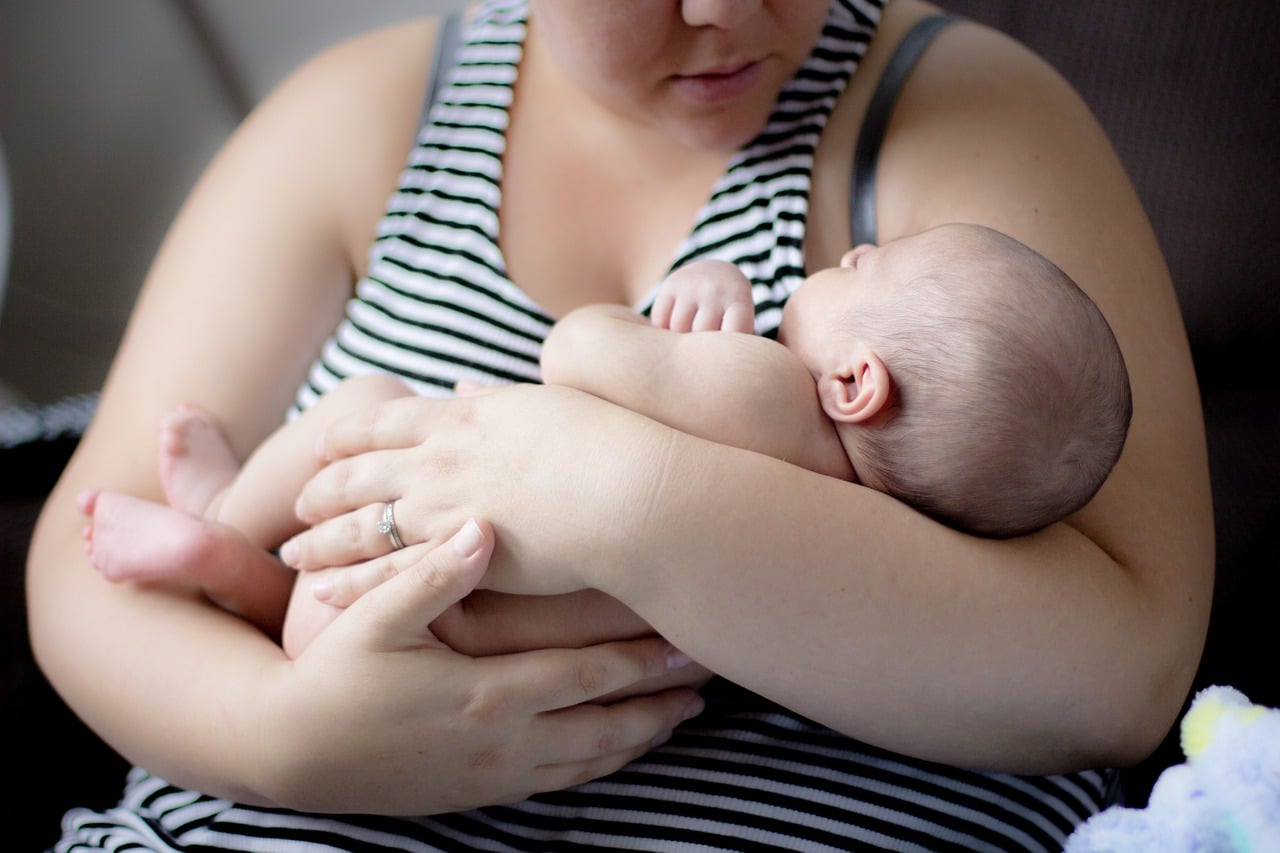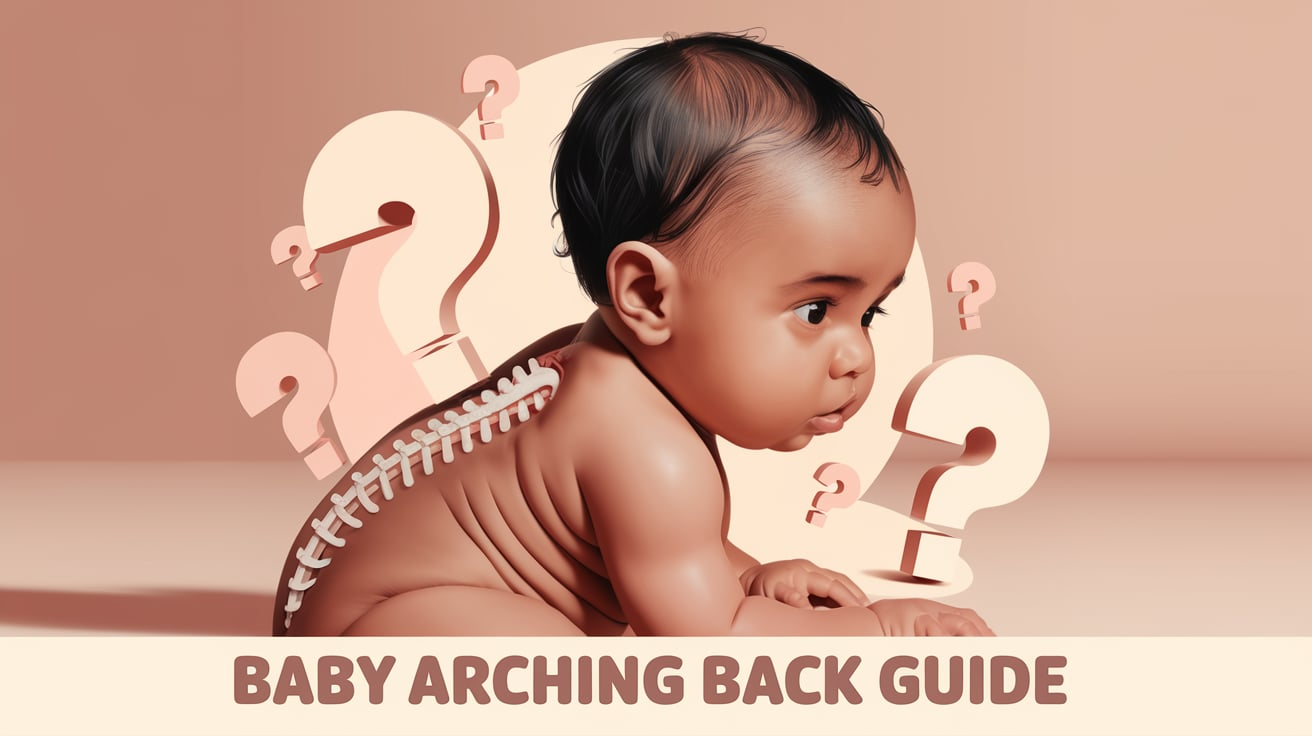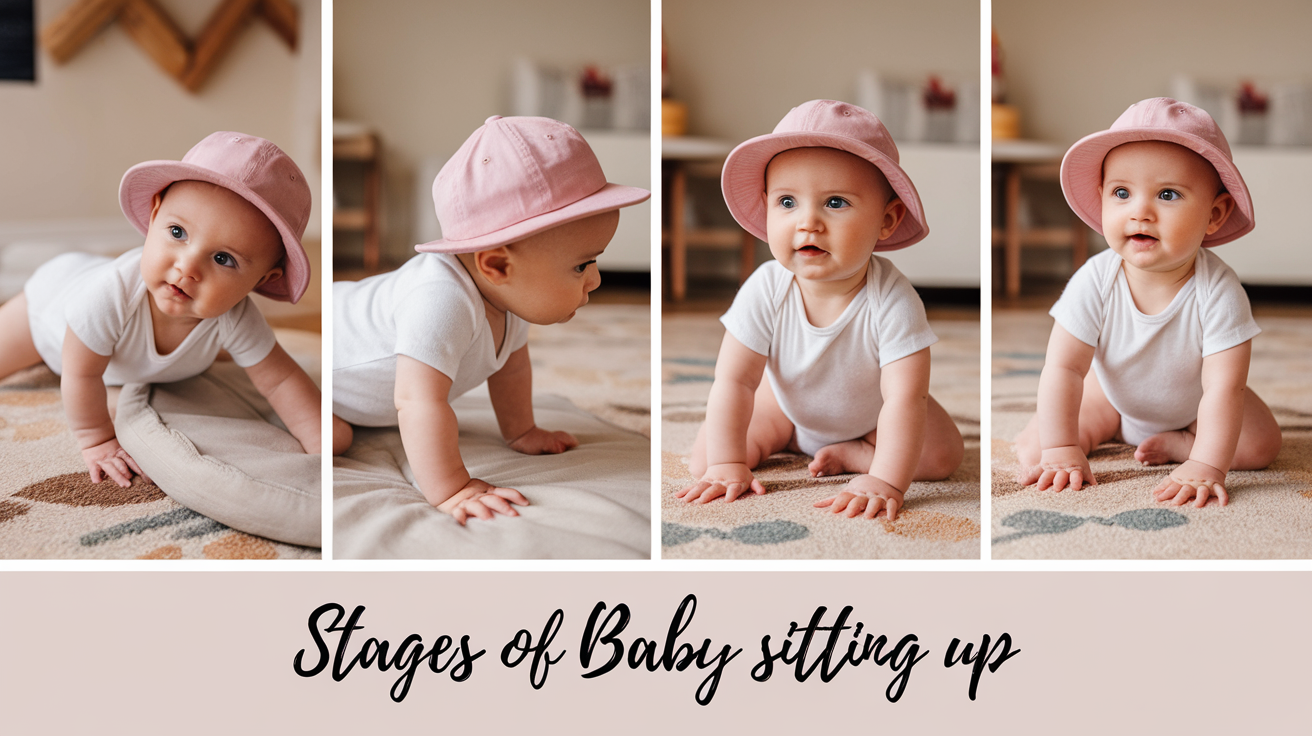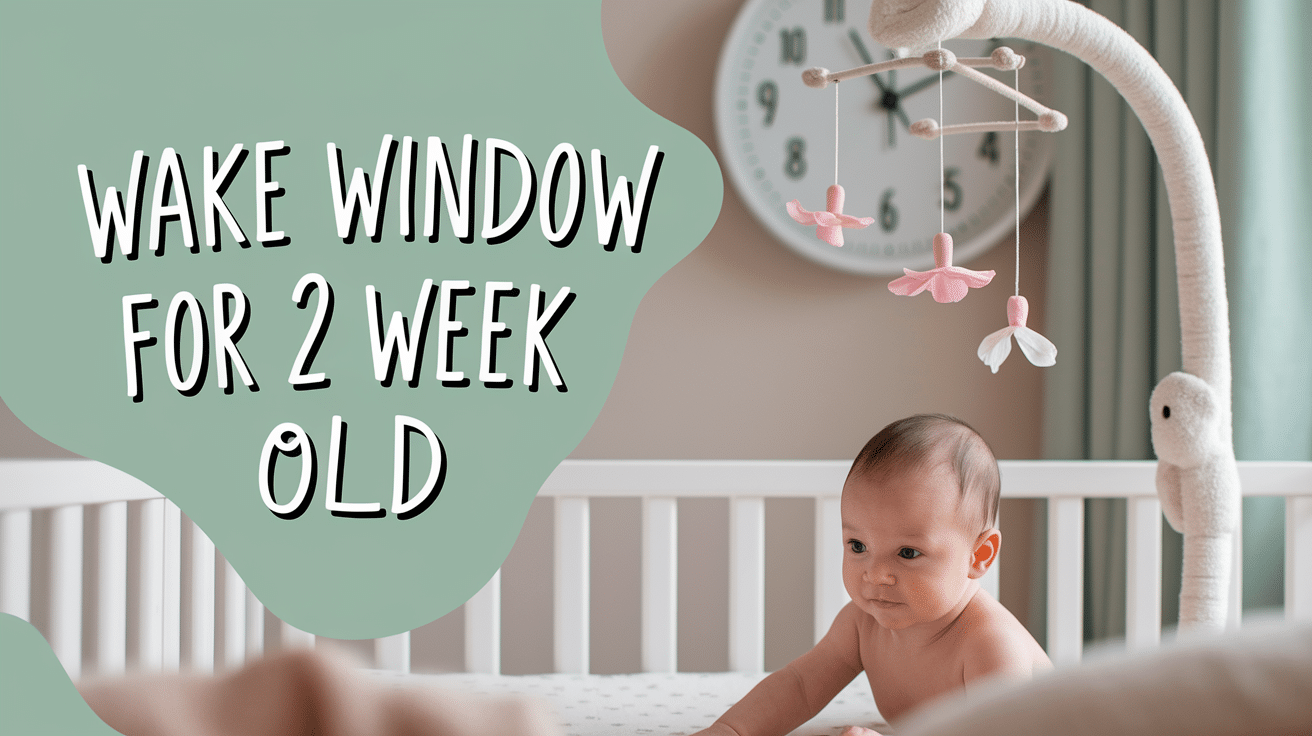
Ever wondered why your tiny newcomer seems to have their days and nights mixed up? Welcome to the charming world of wake windows!
A wake window is simply the period your baby can comfortably stay awake between naps. For a soft 2-week-old, this window is surprisingly brief—typically just 45-60 minutes.
Did you know that newborns spend about 16-17 hours sleeping daily, but only in short bursts? Understanding your 2-week-old’s wake window isn’t just about surviving those early days—it’s your secret weapon for establishing healthy sleep patterns.
When respected, these windows help prevent overtiredness, reduce fussiness, and support crucial brain development.
In this guide, we’ll explore optimal wake windows, signs of tiredness, and simple strategies to work with your newborn’s natural rhythms for more peaceful days (and hopefully nights!).
Wake Window: Definition and Purpose
A wake window is the period a baby can comfortably stay awake between sleep periods, crucial for balancing activity and rest while establishing healthy sleep patterns.
These intervals prevent overtiredness and help parents recognize their baby’s sleep cues to establish predictable routines. Due to their developing nervous systems, newborns (0-3 months) have very short wake windows of just 45-60 minutes, often requiring 4-5 naps throughout the day.
As babies grow, their wake windows gradually extend—a 6-month-old can typically stay awake for 2-3 hours, while a 12-month-old might remain alert for 3-4 hours between naps.
This progression reflects their developing brains and increasing ability to process stimulation without becoming overtired. Older babies typically transition to fewer, longer naps as their wake windows expand.
Understanding Wake Windows for 2-Week-Old Newborns

Steering your newborn’s sleep patterns is one of the earliest challenges of parenthood. Understanding wake windows—the time your baby can comfortably stay awake between naps—is essential for helping your little one get the rest they need for healthy development.
1. Typical Duration (45-60 Minutes)
A 2-week-old baby typically stays awake for 45-60 minutes at a time. This brief window includes feeding, changing, and any interaction before the baby needs to sleep again.
Newborns have immature nervous systems that quickly become overwhelmed by stimulation. Their short wake windows are nature’s way of protecting their developing brains while allowing for essential care and bonding.
2. Factors Affecting Alertness
A baby’s alertness is influenced by their surroundings and physical needs. Calm, softly lit environments help extend their wakeful periods, while overstimulating settings with loud noises, bright lights, or lots of people can quickly exhaust them.
Hunger also plays a role—well-fed babies tend to stay alert longer and engage more, while hungry ones may become fussy or disinterested. A peaceful setting combined with a full tummy often encourages longer periods of quiet alertness and interaction.
3. Sleep Readiness Signs
-
Early Cues: Subtle signs like decreased activity, zoning out, or reduced eye contact often mean your baby is getting sleepy. These cues can appear before any fussiness starts. Catching them early gives you a better chance to settle your baby calmly. It helps avoid overtiredness and makes the sleep transition smoother.
-
Late Signs: Yawning, rubbing eyes, and crankiness are clear signs your baby is past its ideal sleep window. It may also arch its back or resist soothing. At this stage, it’s harder for it to settle and fall asleep. Acting quickly can prevent a full, overtired meltdown.
Why Wake Windows Matter for Newborns

Understanding your newborn’s wake windows—the periods they can comfortably stay awake between naps—is crucial for healthy sleep development.
Respecting these natural rhythms prevents overtiredness, improves sleep quality, and supports your baby’s cognitive and emotional growth.
1. Link Between Sleep Windows and Overtiredness
A newborn’s brain is still developing the ability to transition between sleep and wakefulness. When babies stay awake longer than their developmental stage allows, stress hormones like cortisol flood their systems, making it paradoxically harder to fall asleep.
This overtiredness can trigger a frustrating cycle where exhaustion meets the inability to settle. Parents often misinterpret these wired, fussy behaviors as signs their baby isn’t ready for sleep, when in fact, the opposite is true.
2. How Proper Wake Windows Help Regulate Sleep Patterns
Following age-appropriate wake windows works with your baby’s natural biological rhythms. Newborns typically can only handle 45-60 minutes of wakefulness before needing sleep again.
As they grow, these windows gradually extend, but respecting their current limits helps train their circadian rhythm. Consistent wake windows create predictability that strengthens their internal sleep-wake cycle, resulting in more restorative rest for both baby and parents.
3. Benefits for Baby’s Development and Mood
Well-rested babies are more alert during awake times, enhancing their ability to absorb and process new information. This heightened engagement accelerates cognitive development and strengthens neural pathways.
Appropriate wake windows also lead to happier, more regulated emotional states. A baby who isn’t fighting exhaustion is better equipped to interact positively with their environment, fostering healthier attachment and reducing overall stress in the household.
Sample Daily Routine Using Wake Windows for 2-Week-Old

A 2-week-old baby typically follows a pattern of eat-sleep-wake cycles rather than a strict schedule. Wake windows at this age are short, usually 30-45 minutes.
- Morning (6-9 am): Wake, diaper change, feeding (15-20 minutes), brief awake time for gentle interaction, then back to sleep.
- Mid-morning to Afternoon: Continue cycle approximately every 2-3 hours. Each cycle includes diaper check/change, feeding, short awake time with minimal stimulation, and then sleep.
- Evening: Cluster feedings often occur. A baby may feed more frequently as evening progresses.
- Night: Maintain minimal stimulation during night feedings. Keep lights dim, limit interaction, and return baby to sleep immediately after feeding and diaper change.
Remember that newborns are unpredictable, and this routine serves as a general framework rather than strict rules. Follow your baby’s cues and adjust as needed. The goal is to respond to their needs while gradually introducing gentle predictability.
Tips to Manage Wake Windows Effectively
Managing wake windows effectively requires a balance of observation and routine. Instead of fixating solely on the clock, watch for your baby’s unique tired signals like eye rubbing, decreased activity, or fussiness, while maintaining flexible timing that adapts to your baby’s changing needs.
During awake periods, focus on gentle, age-appropriate activities with soft lighting and minimal stimulation to prevent the overtiredness that makes sleep difficult.
About 10-15 minutes before the expected sleep time, introduce calming transition activities such as gentle rocking, quiet singing, or reading a simple book to signal to your baby that rest time is approaching.
This consistent yet responsive approach honors your baby’s temperament while gradually building healthy sleep patterns that benefit both of you. It turns what can be a frustrating guessing game into an intuitive rhythm that supports your baby’s development.
Additional Tip: Keep a simple sleep log to help identify patterns in your baby’s natural wake and sleep rhythms over time.
Common Mistakes to Avoid in Baby Sleep
Many parents unknowingly keep their babies awake for too long, causing overtiredness that makes it harder for babies to fall and stay asleep due to stress hormones flooding their system.
Watch for early sleepy cues like eye rubbing or decreased activity, as most newborns can only handle 45-60 minutes of awake time.
Attempting to implement a rigid sleep schedule before your baby is developmentally ready creates unnecessary stress, as newborns aren’t capable of following clock-based routines initially.
Instead, focus on establishing gentle rhythms and predictable sequences that work with their biological clock. Mistaking hunger for tiredness or missing subtle sleep signals are other common pitfalls.
Learn your baby’s unique early sleepy cues, which might include quieting down or staring off, as each baby communicates differently.
Too Much or Too Little Sleep?
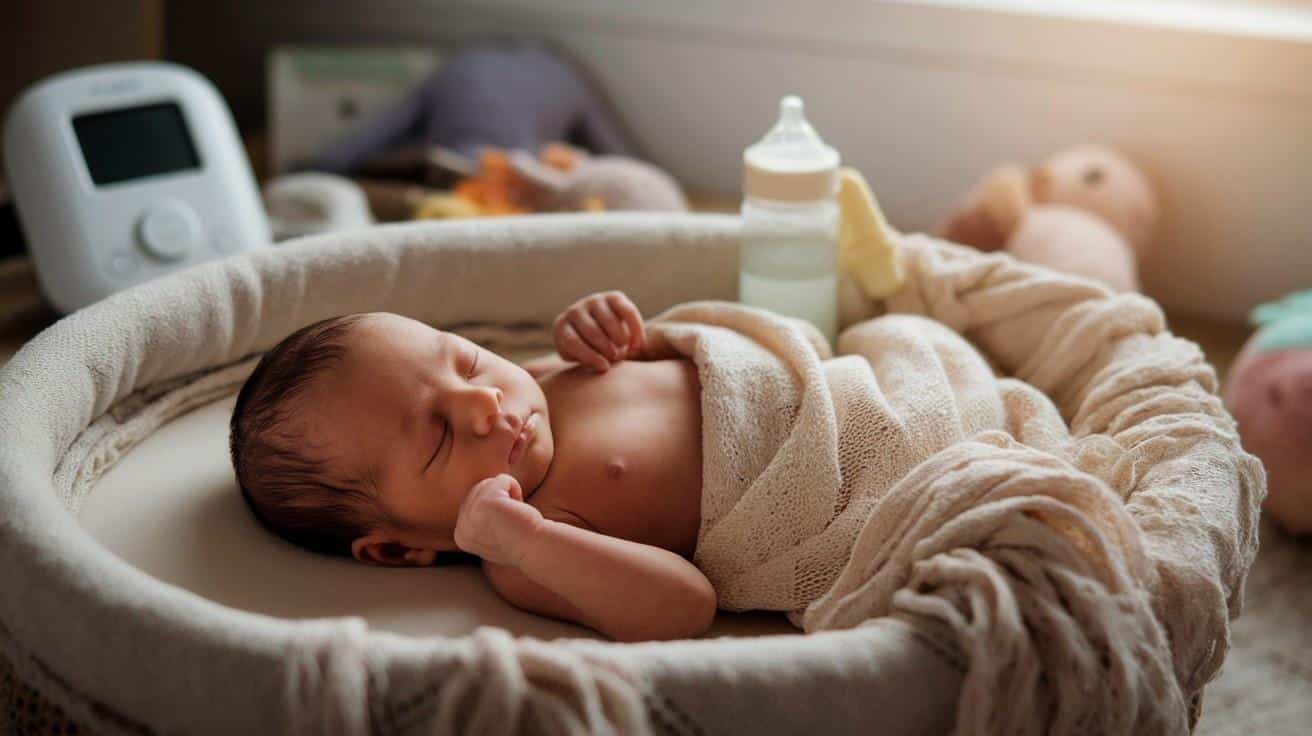
Newborns typically sleep 14-17 hours daily in short bursts of 2-3 hours, waking primarily for feeding. This unpredictable pattern is perfectly normal as their tiny bodies adjust to life outside the womb.
Signs of healthy sleep include waking for feedings (at least 8-12 times daily), regular wet/dirty diapers, and general contentment when awake. Your baby should be alert during some waking periods, though these might be brief.
Contact your pediatrician if your baby sleeps through feedings, is difficult to wake, shows low energy when awake, or sleeps more than 19 hours daily.
Similarly, excessive fussiness, sleeping less than 10 hours daily, or showing signs of discomfort may warrant medical attention.
Remember that each baby is unique, with individual sleep patterns developing over time. Trust your parental instincts – you know your baby best, and any significant concerns always merit a call to your healthcare provider.
Final Words
Observing appropriate wake windows for your 2-week-old baby is crucial for their development and well-being. At this tender age, babies can typically stay awake for only 45-60 minutes before needing sleep again.
Respecting these natural rhythms helps prevent overtiredness, which can lead to fussiness and difficulty settling. When you follow your baby’s wake windows, you support their developing nervous system and promote healthy sleep habits that benefit the whole family.
Remember that every baby is wonderfully unique. Your little one may need slightly shorter or longer wake periods than the average. The key is flexibility and learning to read your baby’s cues.
Trust your instincts as you steer through these early weeks. With observation and patience, you’ll soon find the rhythm that works best for your precious newborn.
If you’re interested in more informational content on mothers and babies, feel free to click here and explore other blogs that you might enjoy.





